The future opportunities for screen printing in art
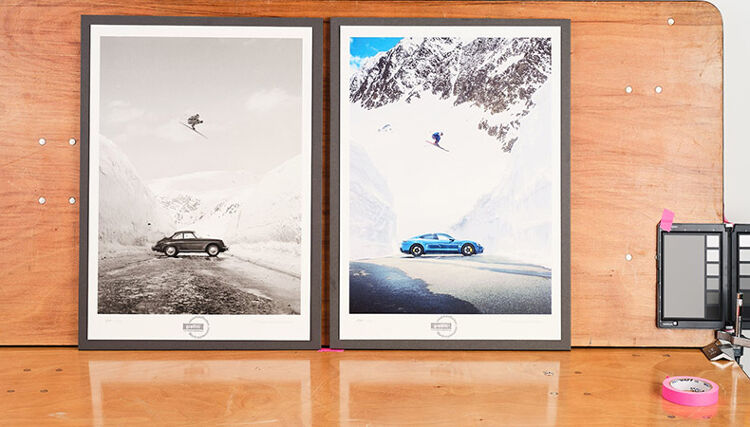
Screen prints have become an essential part of art. Sonja Angerer discusses serigraphy and the future opportunities this sector of printing offers to printers.
Anyone considering screen printing in art today immediately thinks of Andy Warhol and Roy Lichtenstein. These artists played a decisive role in bringing technology into museums. Although screen printing had been practiced for centuries, particularly in Asia, it only became popular in Europe in the 1940s. Screen printing was also used in the USA for advertising posters between both world wars. When the Pop Art and Op Art movements discovered screen printing for reproducing and production of art, it was considered a modern high-tech process. There was a vigorous debate at the time about whether screen printing could be considered art.
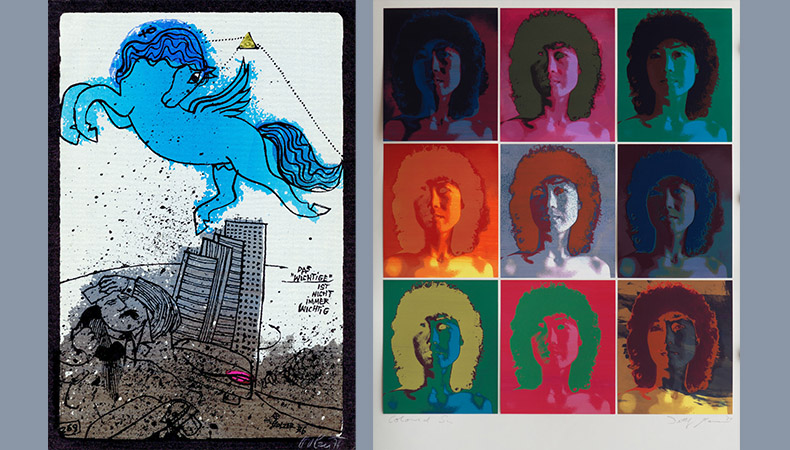 Caption:Left: Serigraphy «The Important is not always important" by Adi Holzer from 1976, right: "Coloured Su" N° XXX to XXXVIII, Detlef Hansen, 1984. Adi Holzer, Attribution, and Detlefhansenfoto, CC BY-SA 4.0, both via Wikimedia Commons
Caption:Left: Serigraphy «The Important is not always important" by Adi Holzer from 1976, right: "Coloured Su" N° XXX to XXXVIII, Detlef Hansen, 1984. Adi Holzer, Attribution, and Detlefhansenfoto, CC BY-SA 4.0, both via Wikimedia Commons
Serigraphy, screen printing and other printing processes
In the 1940s, screen printing was generally referred to as "Serigraphy" in Europe. The term combines the Latin "sericus", meaning "silk", and Greek "graphein" meaning "to write” or “to record". This is because the sieves used to be covered with real silk. Today, "Serigraphy" is understood to be art reproductions in the screen-printing process only. The term distinguishes these prints from those produced in digital printing or lithography. Various terms are used for digitally reproduced art, such as “fine art print” or “giclée” print. "C-print" refers to an art print produced using the traditional photographic process.
Screen-printing is possible as full colour and raster printing. Historically, full-colour printing was preferred for graphic arts. Artists were encouraged to transfer the motif to the screen by hand. This approach aimed to elevate Serigraphs to the status of unique artistic works. Halftone printing was perceived as a mere photographic reproduction. Today, contemporary artists like Damien Hirst and James Rizzi no longer adhere to these conventions, and freely use screen printing in innovative ways.
However, the tradition of destroying the screens for Serigraphs once the desired number of reproductions has been achieved remains. Artists' silkscreen prints are typically numbered and signed, ensuring their authenticity. This practice allows for significantly higher prices, as the certificate guarantees it is an original print.
Artist's screen prints are often crafted on hand-printing machines. However, they can also be produced on commercially available semi-automatic, three-quarter and even fully automatic machines, as there has never been a procedural separation between commercial-industrial and artistic applications in screen-printing.
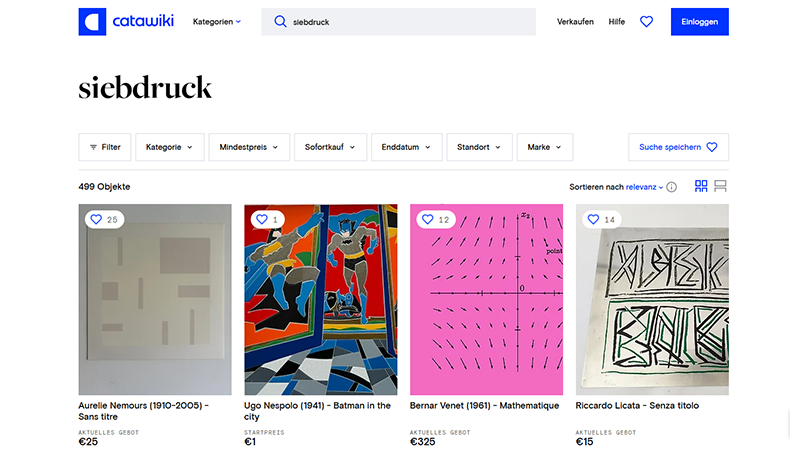 Caption: Screen-printing art can be obtained from the Catawiki portal for little money. However, some artists’ work may cost several thousand euro.
Caption: Screen-printing art can be obtained from the Catawiki portal for little money. However, some artists’ work may cost several thousand euro.
Fine Art, Art and Market
As an analogue printing process, screen-printing requires templates or screens. This makes the process quite complex, especially when printing with several colours. In many cases, eight or more colours are used for Serigraphy. This makes art screen prints expensive to produce. It is often difficult to recover the costs for the small series. In the art market portal Catawiki, you can buy signed silkscreen prints by well-known artists for little money.
Due to the high costs, many artists and galleries often switch to "digital screen printing", which is essentially digital printing. The advantages are obvious. Depending on the ink used, it is possible to print on a variety of substrates, including photo and art paper, handmade paper, canvas, Perspex, metal, and wood. Since no templates are required, a fine art digital print is much cheaper to produce and do not require a minimum print run. When printed on fine art papers, e.g. from Hahnemühle and archive-proof inks, e.g. Epson Ultrachrome, digitally printed art lasts for decades.
Serigraphy, however, still benefits from traditional screen-printing techniques e.g. allowing the use of various colours and fluids available. These can be applied in layers on almost any material. This makes half-reliefs, but also full-surface and partial print varnishing, glazes and surface structures possible. Once the templates have been created, they can also be used to illustrate other products with the artist's motif, such as T-shirts.
 Caption: "Fanti Village, Liberia", signed raster screen print by Detlef Hansen, 1987. Photo: Detlefhansenfoto, CC BY-SA 4.0, via Wikimedia Commons
Caption: "Fanti Village, Liberia", signed raster screen print by Detlef Hansen, 1987. Photo: Detlefhansenfoto, CC BY-SA 4.0, via Wikimedia Commons
The Future of Screen-printing in Art
Serigraphy has always attracted passionate artists, such as FESPA co-founder Michael Caza. Through their work, they often help shape the view of the artist's work. For this reason, it is usually specialised companies that have dedicated themselves to Serigraphy. Some, like Stainer Schriften und Siebdruck GmbH in St. Martin near Lofer, Austria, have their own departments for serigraphy. However, they also offer industry-standard products such as digital printing applications and vehicle wrapping.
Serigraphy and art reproductions are particularly suitable for companies with deep roots in artisanal screen printing, as a lot of experience and skill is required. Existing connections to artists and the art market also helps, as business can be very profitable with well-known artists. These artists often remain loyal to trusted companies for years. However, the business of working with part-time, local, and hobby artists should not be overlooked in the realm of screen-printing art. These clients are often willing to pay premium prices to see their work as a Serigraphy. Also, this clientèle is much less dependent on the overall economy situation and fleeting trends. Overall, it can be said that screen printing and art will continue to complement each other, presenting an exciting market for specialists.
Entries for FESPA Awards 2025 are now open! The FESPA Awards celebrate the achievements of printers and sign-makers from across the globe. Recognising their skill, talent, creativity and innovation. The winners will be announced during the FESPA Global Print Expo 2025 in Berlin Germany, 7 May 2025. Enter the awards here.
To discover the latest content that covers a wide range of sectors including screen printing and fine art sign up for FESPA’s free monthly newsletter FESPA World available in English, Spanish and German.
Topics
Interested in joining our community?
Enquire today about joining your local FESPA Association or FESPA Direct
Recent news
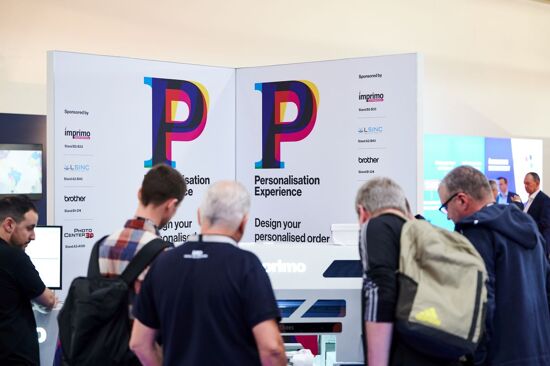
Personalisation Experience returns for its third edition
Personalisation Experience is back for its third edition, taking place from 6-9 May 2025 at Messe Berlin, Germany. At the event, visitors wishing to discover the latest innovations in personalisation technology, as well as trends, will be able to explore innovations from a wide range of exhibitors and engage with thought leaders.
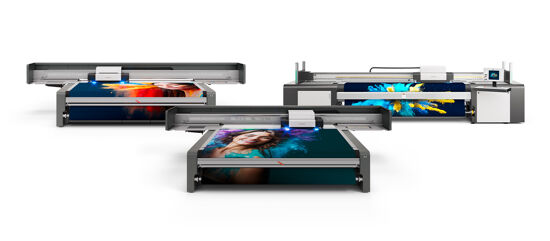
swissQprint to launch new flatbed range at FESPA Global Print Expo 2025
At FESPA Global Print Expo 2025 in Berlin, swissQprint will unveil its redesigned flatbed printer range, boasting a 23% output increase and 10 color channels. The Karibu roll-to-roll printer and diverse applications will also be showcased.

Global exhibitor line-up confirmed for FESPA Global Print Expo 2025 and co-located events
FESPA Global Print Expo, European Sign Expo and Personalisation Experience (6 - 9 May 2025, Messe Berlin, Germany) will welcome over 550 new and returning exhibitors from over 36 countries, already surpassing exhibitor numbers from last year’s events.

How is Smart Manufacturing Transforming Fashion and Apparel Manufacture?
Debbie McKeegan explores the paradigm shift in the fashion industry from fast fashion to personalised fashion, highlighting the technical challenges, solutions, and operational benefits for the manufacturing community. Debbie speaks to experts Oliver Mustoe-Playfair from Prinfab, Phil McMullin of Epson UK and Guy Alroy of Early Vision.